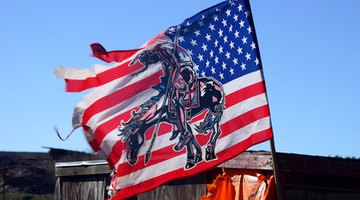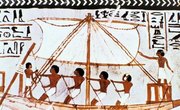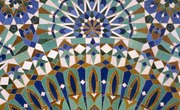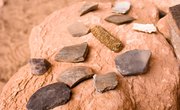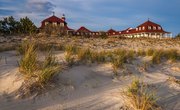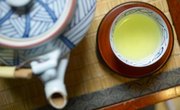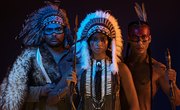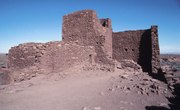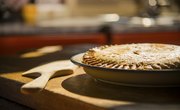The Shoshone people are a tribe living in the Western part of the United States. They traveled as nomads across large areas of California, Nevada and Idaho until 1875 when the United States government settled them in the Lemhi Valley Indian Reservation along with the Bannock and Sheepeater tribes.
The Shoshone have a rich tradition and create attractive art and crafts in both traditional and new styles. Examples of Shoshone crafts are on display in the Smithsonian Institute National Museum of the American Indian.
Bead Work

Creating beautiful bead work is a Shoshone tradition. You can see examples of Shoshone beaded moccasins and dresses in museums. According to the National Museum of the American Indian their collection includes woman’s boots and leggings from the 1900’s. These traditional crafts are made of leather decorated with intricate bead work.
The beads are made from glass, metal and brass buttons. The Northern Shoshone used bright colors and sewed the bead work on using the lazy/lane stitch.
Baskets
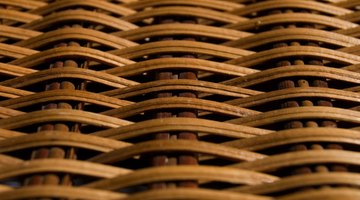
Traditional styles of basket weaving are nearly a lost art for modern Shoshone. The traditional Shoshone baskets are attractive and utilitarian. Because Shoshone baskets were mainly made for use and not as artwork for sale the examples in Museums are often worn and show signs of use.
According to Wind River History, a Shoshone cultural website, traditional Shoshone baskets are made from willow and are made in several forms. The baskets are coiled and made with a gap stitch weft on a three or four rod willow frame.
Rawhide Containers
Parfleche is an art form that has its roots in necessity. The nomadic peoples of the west needed a way to carry all sorts of things and rawhide containers solved the problem. Shoshone women made parfleche containers and bags to carry supplies and food out of rawhide.
The hides of buffalo, elk or deer were cleaned and scraped before being stretched tightly on a frame to dry. The result was a stiff rawhide that could be shaped into tough and durable container for carrying food or supplies.
According to Wind River History Shoshone parfleche containers are painted with distinctive designs often divided into three separate painted areas. The most common form is a large folded rawhide envelope that can be tied to a saddle.
Related Articles
References
Writer Bio
Ronnie Daniels writes content for blog, website and print publication. Writing professionally since 2007, Daniels has been published on various websites and offline in "Mirror Mirror Magazine." Constantly improving his craft and writing better articles and stories has become Daniels' goal in life.

